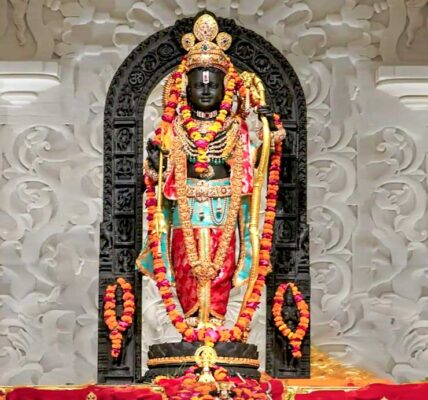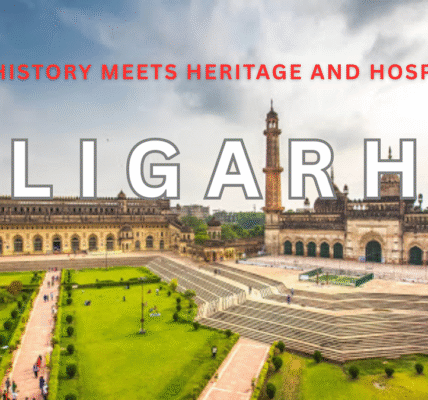The history of Mathura and Vrindavan is a captivating tapestry interwoven with religious understanding, mythology, dynastic rule, and cultural richness. This article delves into the comprehensive history of Mathura and Vrindavan, guiding you on a divine journey through different eras, kingdoms, and everlasting devotion. The two holy cities of Braj Bhoomi are the pulsating core of Krishna mental state, celebrated for their eternal ties to Lord Krishna, lively religious customs, and magnificent building construction.
Origins and Early History of Mathura
As one of India’s ancient places, Mathura is of great historical, sociocultural, and religious importance. the city of Mathura, situated in the western area of present-day Uttar Pradesh, is positioned on the banks of the Yamuna River. Its most prominent claim to fame is that it is the maternal location of Lord Krishna, which has made it a key site for Hindu faithfulness and pilgrimage.
Mathura’s starting points can be traced back to historical times, following mentions in Indian epics such as the Mahabharata and the Ramayana. It is advocated by historical evidence that Mathura was populated from as early as the 6th decade BCE. Its strategic position on trade connections linking the Gangetic plains to the westernmost and central areas of the subcontinent made it a significant urban center in northern India.
In the 6th century BCE, Mathura became a major political and cultural starting point under the Shurasenan dynasty’s rule, frequently referenced in beginning Sanskrit language texts. Subsequently, it was influenced by a number of dominant empires, such as the Maurya and Shunga dynasties. It is thought that the Mauryan emperor Ashoka the Buddha brought Buddhism to Mathura, which resulted in a diversification of the city’s religious practices.
Over the period
1st century BCE and the early decades CE, Mathura developed into a prominent hub of art and sculpture, especially recognized for the famous school of art.
This artistic style, characterized by its exceptionally detail-oriented and expressive statues, functioned a significant role in the development of early Indian symbolic design in each Hindu and Buddhist traditions.
During this period, the city developed into a significant stronghold for both Jainism and Buddha’s religion.
In the period of the 1st century BCE and the early decades CE, Mathura developed into a prominent hub of art and sculpture, especially recognized for the famous school of art.
This artistic expression style, characterized by its exceptionally detail-oriented and expressive statues, functioned a significant role in the development of early Indian symbolic design in each Hindu and Buddhist traditions. During this period, the city developed into a significant stronghold for both Jainism and Buddha’s religion.
The city of Mathura maintained its religious significance over the centuries, despite experiencing invasions and declines. It remained venerated as Krishna’s sacred area land, as depicted in the Puranas and other religious texts.
Mathura Under Empires: From Maurya’s to Gupta
During the rule of influential dynasties, Mathura and Vrindavan underwent significant historical transformations. During the Mauryan Empire, Mathura developed into a hub for Buddhadhism and Jainism, as Emperor Ashoka built stupas and pillars with inscribed regulations.
Subsequently, the Kushan Empire initiated a golden age for Mathura’s history, especially regarding art and culture. During this period, the Mathura School of Art established, creating beautiful sculptures of Buddha and other deities. This merging of spiritual and artistic expression continues on to be a fundamental element of India’s classical art heritage.
The Gupta period saw a revival of Hinduism, leading to the building of numerous temples for Lord Krishna and Vishnu. During this historical period, the Krishna Janmabhoomi temple complex was constructed, signifying Krishna’s holy birthplace.
Krishna’s Janmabhoomi: The Religious Heart of Mathura
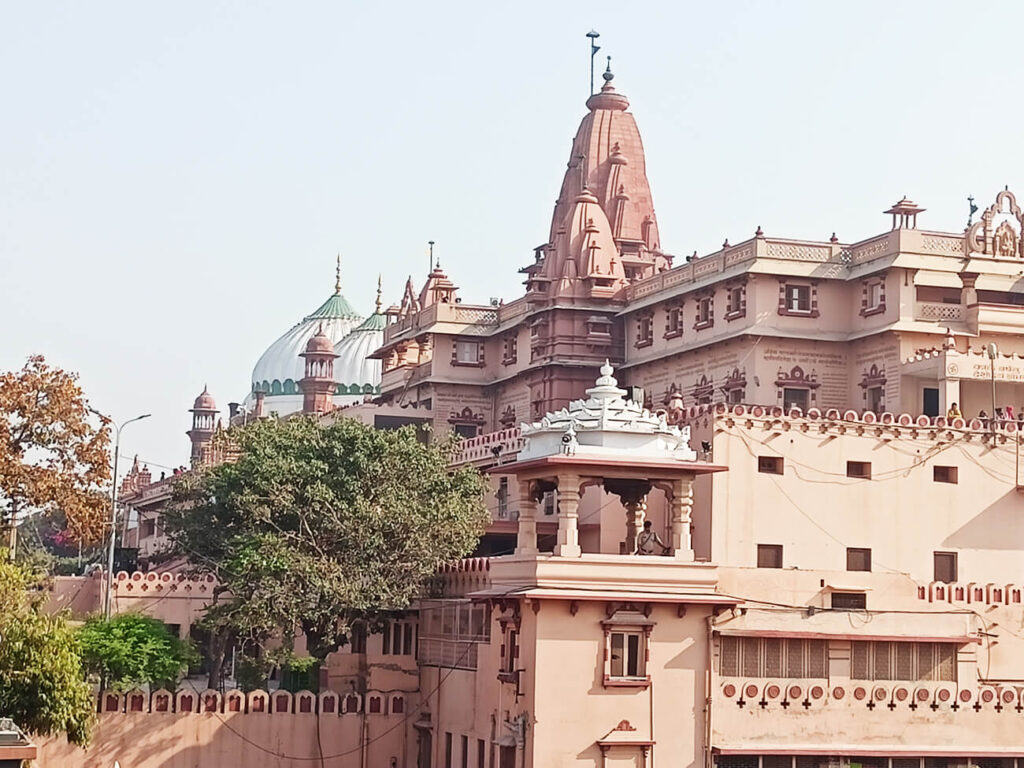
The sacred site of Krishna Birthplace must be emphasized when discussing the history of Mathura city and Vrindavana. This praiseworthy emplacement is supposed to be the exquisite spot of Lord Krishna’s birth. For centuries, Krishna Janmabhoomi has endured many encroachments and rebuilds, yet it remains a testament to enduring confidence.
The temple building encompassing houses a prison cell revered as Krishna’s birthplace. During Janmashtami, this site attracts travelers from around the world, establishing Krishna Janmabhoomi as a central element in religious and historical contexts.
Krishna’s Childhood in Vrindavan
Lord Krishna’s youthfulness in Vrindavan is revered as one of the most sacred and beloved episodes in Hindu legends. Krishna’s formative years in Vrindavan, set amidst the lush greenery and sacred groves of the Water of Yamuna River, are imbued with captivating stories of Innocenti, knowledge, and spirituality marvel.
Krishna was raised in Vrindavan to protect him against the evil king Kansa, despite being born in Mathura city. He was raised as the beloved offspring of Nanda Baba and Yashoda Maiya. From an early lifetime, he showed remarkable skills.
During his early years’ childhood, he became known for his playful behavior, particularly, his fondness for stealing butter Milch, which earned him the charming nickname “Makhan Chor.” Nonetheless, his affordable jokes were genuinely charming and endeared him to all the people of the area.
Many divine traits marked Krishna’s childhood, including his deep bond with the gopis of Vrindavan.His flute playing entranced them, and the Raas Leela symbolized the soul’s union with the divine under moonlight.
In Vrindavan, Krishna also distinguished himself through heroic acts. He fought back lethal evil dispatched by Kansa, including Putana, Trinavarta, and Bakasura, safeguarding the local people from danger. One of the most powerful legendary tales demonstrating his power and kindness is that of his raising Govardhan Hill to protect Vrindavan from deluge.
Krishna’s childhood time in Vrindavan transcends mythology; it is a vibrant tradition that inspires devotion, art, rhythm, and poetry, representing the eternal play of divine love and joy.
Braj Bhoomi and the Twelve Forests
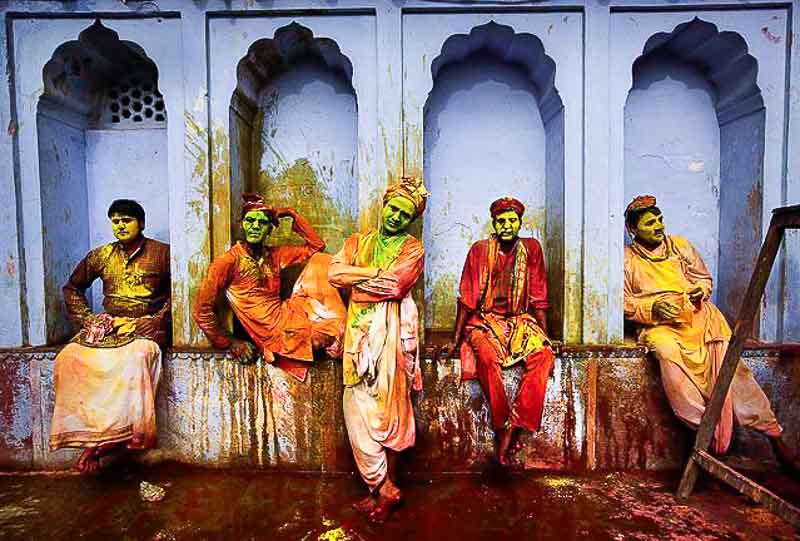
Braj Bhoomi, which is profoundly linked to the life and pastimes of Lord Krishna, is one of the most revered and religiously vibrant areas in India. Which includes the areas surrounding Mathura, Vrindavan, Govardhan, Barsana, and Nandgaon, transcends mere geography; it is a sacred realm where religious purity and devotion full flood the very soil. This sacred area, where every tree, pond, and path bears witness to tales of Krishna’s adolescent life and youth, has become a pivotal site for countless devotees.
An aspect of Braj Bhoomi that is spiritually rich is the Twelve forests of Braj, known as Braj Dwadash Van. These woods are more than simply natural vistas; these are sacred groves filled with the divine nature essence of Krishna. Each of the Twelve forests of Braj carries its own emotional importance and is connected to specific events in Krishna’s personal life. The forests include Madhuvan, Talvan, Kumudvan, Bahulavan, Kamyavan, Vrindavan, and various other regions of significant spiritual value.
Adherents embark on pilgrimages through the Twelve forests of Braj to experience again the holy stories in which Krishna danced, played, and worked wonders. These woods serve as vibrant acknowledgements. To sacred affection and safeguarding, from hoisting Govardhan Hill to beguiling the Gopi’s with his pipe.
Braj Bhoomi still inspires saints, poets, and pilgrims today. The spiritual legacy is sustained through the rich traditions of bhajans, Raas Leelas, and temple festivals. This land is not only a spatial journey but also a walk throughout sacred past.
Braj Bhoomi and the Twelve forests of Braj essentially constitute the emotional core of Krishna devotion, providing seekers with a timeless experience of faith, beauty, and transcendence.
Saints and the Bhakti Movement in Mathura and Vrindavan:
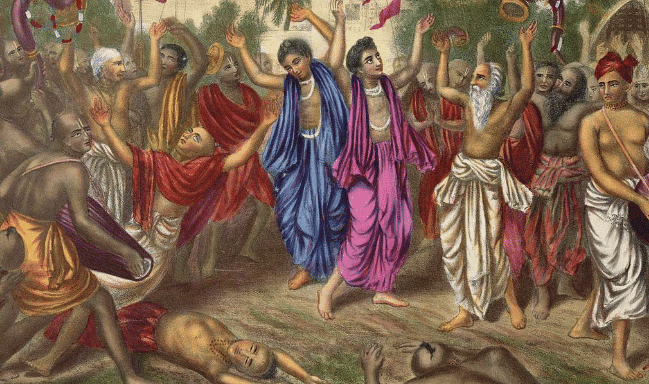
The bhakti transition, which expanded from the 7th to the 17th centuries, represented one of the most significant spiritual and social revolutions in Indian history. Rooted in personal devotion (bhakti) to God, this movement overpassed barriers of caste, gender, and linguistics, inspiring millions to connect with the divine through love and acceptation. It changed the religious landscape of India and created a way of worship that is deeply passionate and individually, still resonating today.
The Holy figures, who arose from different parts of the country and disseminated their teachings in local languages to connect with ordinary people, were central to the bhakti movement. These saints opposed to the strict observances of organized religion and stressed the importance of direct loyalty to a personal god—usually Vishnu, Krishna, Rama, or Shiva. Their message was that every soul contains God, and that true devotion outweighed social authority or ritual practices.
In Northern India, figures such as Kabir, Meera Bai, Ravidas, Surdas, and Tulsidas emerged as immortal representatives of the bhakti movement. Kabir, a poet, through his audacious poems, took on religious uniformity and advocated for universal spirituality. Meera Bai’s fervent lyrics showcased her steadfast love for Lord Krishna, serving as an inspiration for generational success through her bravery and dedication. Ravidas, the man, who came from a marginalized background, taught the principles of inner purity, love, and equality, whereas Surdas honored Krishna’s scare play with his poetry.
The bhakti movement was initially established in South India by Alvars and Nayanars, who were saints of Vaishnavism and Shaivism. The Tamil melodies they composed and performed in homes and temples stressed devotion and emotional surrender to God rather than adherence to conventions.
In addition to being a spiritual strength
The bhakti movement also represented a sociocultural emergence. It made spirituality more accessible, promoted the use of local languages, and sparked creativity in music, dance, poetry, and storytelling.It also dismantled social barriers by recognizing women and lower-caste saints marginalized in traditional spiritual life.
The bhakti movement’s preservation endures today through devotional songs, temple practices, and ongoing veneration of the saints who influenced India’s spirituality identity. Their teachings serve as a reminder that the true ways to connect with the divine are love, compassion, and inner devotion.
Archaeological Evidence and Discoveries
Mathura and Vrindavan, the venerable cities, rank among India’s most spiritually and historically important locations. The extensive archaeological excavations have discovered deeper layers of Mathura history, while their religious associations with Lord Krishna are well-known. The findings provide tangible evidence of the ancient culture civilizations in the region, its rich cultural evolution, and continuous habitation over thousands of years.
The existence of these particular valuables indicates that Mathura held significance not just as a metaphysical headquarters, but also as a flourishing economic and intellectual hub.
Archeological finds in Mathura indicate that it served as a prospering urban center from at least the 6th century BCE.
Discoveries, marble construction, monetary items, and limestone representations have been uncovered through explorations at various sites. Including the Katra Keshav Dev pyramid and the historical city proximity to Vishram Cave.
A significant finding regarding the history of Mathura is its connections to the Kushan Kingdom, particularly while under the rule of Kanishka in the 2nd century-old CE.
During this period, the settlement blossomed into a key center for art linked to Buddhism, Jainism, and Hinduism. The archaeological discoveries in Mathura, featuring beautiful lime-filled rock constructional creations, intricate carvings, and temple edifices, showcase the city’s variety of metaphysical celebrations.
Archeological Evidence in Mathura and Vrindavan
Vrindavan has seen smaller administrative archeological studies than Mathura, yet several middle-aged historical structures and artifacts have been discovered there. These discoveries correspond to the resurrection of affection in the region during the Bhakti movement, particularly influenced by saints such as Chaitanya Mahaprabhu and Vallabhacharya. Vrindavan’s historical records are connected to pilgrimage texts, while its documentation culture provides support for narratives from later phases of Mathura history.
Inscriptions in Brahmi script, ancient seals, and relics linked to various dynasties like the Shungas, Nagas, and Guptas are also part of the archaeological evidence from Mathura. These results illustrate the ongoing political, economic, and religious significance of the region.
The Administrative Museum currently houses Mathura’s artifacts and sculptures, forming one of India’s richest ancient art collections. This hidden gem trove enables historians to assemble the complex tapestry of Mathura’s history, bolstering the city’s status as a cradle of culture and spirituality.
Eternal Relevance in the Modern World
In a world that perpetually sprints toward digitality, there exist rare locations where time appears to stand still—where spirituality, culture, and history continue to shape contemporary life. Mathura and Vrindavan are two of these ageless places. These holy areas, linked to the life of Lord Krishna, remain profoundly significant in modern times.
A look into the history of Mathura uncovers that the city was, for many centuries, a vibrant cultural and religiously center and the birthplace of Lord Krishna. The prehistoric temples, ghats, and monuments remain as a testament to the devotion and heritage that have shaped this region for thousands of years. The city’s spiritual core remains intact despite the rapid expansion of urban and tourist industry structures.
The annual visitors to Mathura and Vrindavan are still guided by the heritage of these towns. The cities provide a sanctuary for reflection, peace, and connection with something greater, offering pilgrims and spiritual seekers more than just religious rituals. In spite of the fact that we live in a digital age, individuals from diverse backgrounds derive profound significance from going to the actual locations where Krishna played, taught, and inspired.
In particularly
Vrindavan is well-known for its lasting spirit of devotion. At times of events such as Holi’s and Janmashtami, the village bursts into life, celebrating filled with unparalleled positivity and joy.
Those ceremonies are more than just historical gatherings. They are living ceremonies thoroughly embedded in the history of Mathura and Vrindavan. The echoes of Krishna’s leelas (divine pastimes) continue to reverberate everywhere—from the chants in temples to the evening aartis on the ghats.
In addition
Ashrams and religious centers in these towns still draw followers from around the world. Modern mindful teachers frequently draw upon values rooted in Mathura history, such as love, compassion, and devotion, to form the basis of their teachings. Yoga, meditation, and kirtan gatherings have integrated these towns’ sacred essence into the global wellness conversation.
These towns are also significant for their impact on Indian arts and literature. A abundance of classical dance forms, songs, and poems draw inspiration from Krishna’s residence in Mathura and Vrindavan. The legacy endures in creative expression as well as in temples, thanks to this cultural existence.
Essentially, the historical narrative of Mathura and Vrindavan does not merely allow for a glimpse into bygone times; it also serves as a beacon for the present day. The principles of love, harmony, and devotion that arose here still provide meaning and object in our rapidly evolving world.


